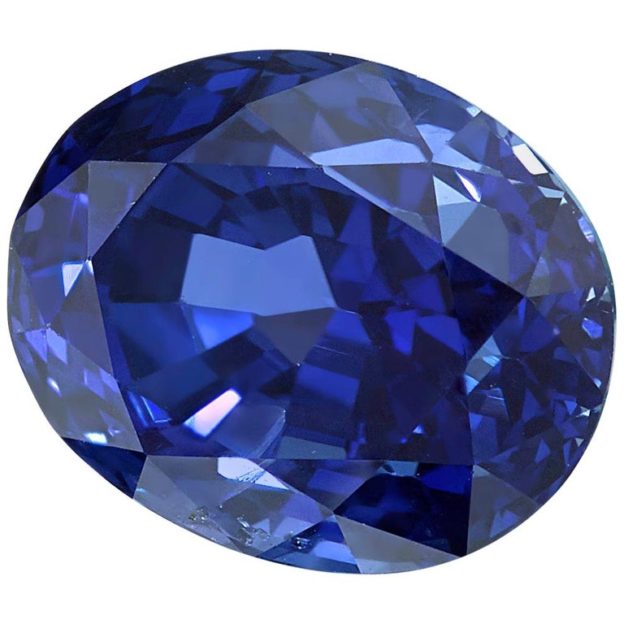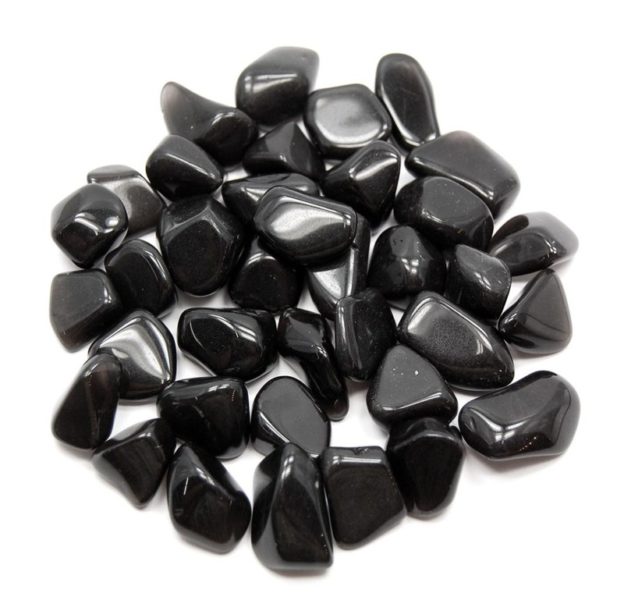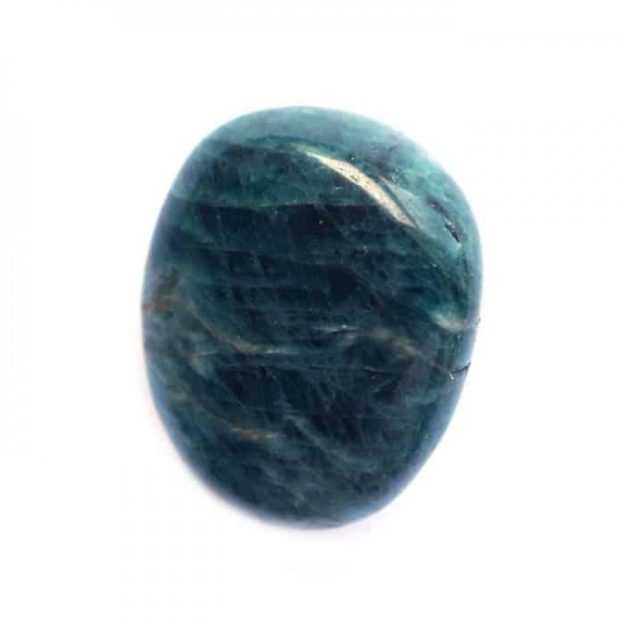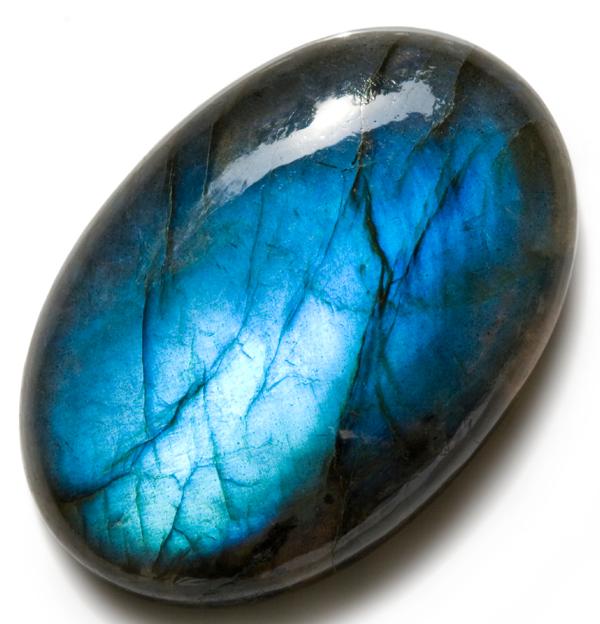Marbode, author of a famous lapidary of the middle Ages describes the fascinating brilliance of sapphire, limpid and deep at the same time. Of the four precious stones (diamond, emerald, ruby, sapphire), it is usually quoted last. The most beautiful virtues are nevertheless associated with him: purity, justice and fidelity.
Mineralogical Characteristics of Sapphire
Sapphire is corundum like ruby, its twin brother. Chromium gives the color ruby red while titanium and iron transmits blue to sapphire. Sapphire is more abundant but the great specimens are exceptional.
Classified in the group of oxides, sapphire has no cleavage (natural plans of breakage). Its facies (aspect) can be pyramidal, prismatic, tabular or in a cask. Of a great hardness, 9 on a scale of 10, it lines all the bodies except the diamond.
Sapphire is formed in metamorphic rocks (rocks transformed by a sudden rise in temperature or pressure) or magmatic rocks (rocks from the center of the earth propelled to the surface following volcanic eruptions). It is found in silica-poor rocks: nepheline, marble, basalt…
Most often, sapphires come from small alluvial deposits called secondary deposits : rivers descend from mountains carrying stones at the foot of torrents and in the plains. The extraction methods are usually artisanal: dug wells or simple washing of sand and gravel using pans, traditionally wicker. Primary deposits involve difficult extraction of rocks at higher altitudes.
A sapphire must have a nice shine. The milky appearance of a sapphire, then called “chalcedon”, is undesirable. Microscopic cracks causing an effect of ice or foam devalue sapphire, dots and grains as well. All these defects risk lowering the sapphire to the rank of “fine stone”. On the contrary, a sapphire of perfect blue beauty can be worth a great price.
The colors of sapphire
The colors of the minerals are determined by the more or less minute presence of certain chemical elements. Chromium, titanium, iron, cobalt, nickel or vanadium combine and color various corundum.
Only red corundum, ruby, and blue corundum, sapphire, are considered gemstones. The others, variously colored, are considered as “fancy sapphires”. Their name “sapphire” must be followed by their color, (yellow sapphire, and green sapphire …). Until the late nineteenth century, their relationship is not clearly established, they are called “Eastern Peridot” (green sapphire), “oriental topaz” (yellow sapphire), “oriental amethyst” (purple sapphire)…
A stone sometimes has several clearly differentiated colors or has reflections such as girasol sapphire. The colorless and transparent corundum is a white sapphire or “leucosaphir”. There is a sapphire with a spectacular coral color. Native to Sri Lanka, this rarity bears the special name of “padparadscha” (lotus flower in Sinhalese).
The color of the sapphires can be perceived differently according to the light sources. Some indigo blue sapphires look almost black in artificial light. Others become purple in the light of the sun. Sapphire also has pleochroic properties: the color varies according to the angle of observation.
Sapphire Size
Traditionally, sapphire is cut with diamond dust. The polishing is carried out using a powdered abrasive based on ordinary corundum and declassified: emery also used in the polishing of optical glasses.
Faceted sizes enhance the sparkle of sapphires. The stones feature notable inclusions like cat’s eye sapphire (forming a vertical line as the cat’s pupil) or the highly sought star sapphire (a six-pointed star) will reveal all their beauty after an old classic size called “in cabochon “.
Deceitful Appellations and Confusions
There are several misleading names:
- The “sapphire of Brazil” is a blue topaz often irradiated.
- The “spinel sapphire” is actually a blue spinel.
- The “water sapphire”, a cordierite.
The saphirine often found in association with corundum, is actually a silicate. It owes only its name to its blue color similar to that of sapphire.
Of producing synthetic sapphire since 1920. They replace natural sapphires in industrial applications. Jewelery also uses them as well as synthetic star sapphires obtained since 1947.
Heat treatments (around 1700 °) and irradiations aim at modifying or correcting the color and the transparency. The use of these methods must be mentioned.
Provenances of Sapphire
Sri Lanka
The sapphires of the Ratnapura region have been known since ancient times. Gems are extracted from the mauve (blue forget-me-not), rare star sapphires, and colored sapphires including padparadscha . And even today, almost half of the sapphires come from ancient Ceylon. Among these, some celebrities:
- Logan 433 carats (more than 85 g). Surrounded by diamonds, it is cut into a cushion. Exceptional purity and brilliance can be admired at the Smithsonian Institution in Washington (below left).
- The fabulous 563-carat Indian Star (below) and the Midnight Star, 116-carat (above right), astonishing in its violet-purple color. These two wonders are visible at the Museum of Natural History of New York.
Indian cashmere
It is a rare primary deposit unfortunately almost exhausted for forty years. Sapphires, extracted from kaolinite, come directly from the heights of Kashmir at more than 4500 meters of altitude. Deep blue velvety, they are considered the most beautiful of all. The current sapphires supposedly “Kashmir” usually come from Burma.
Myanmar (Burma)
The region of Mogok, cradle of rubies, also contains beautiful sapphires from the pegmatite. In the past, most oriental sapphires came from the independent kingdom of Pegu, located northeast of the current capital Rangoon.
Mineralogical properties of lapis lazuli
The Smithsonian Institution in Washington displays a magnificent Burmese star sapphire: the 330-carat Asian Star, medium dark blue.
Thailand
Extracts of basalt in the Chanthaburi region and the Kanchanaburi region , the sapphires, of good quality, are dark blue or blue-green sometimes starred. There are also colored sapphires.
Australia
Sapphires were quarried from Queensland basalt rocks as early as 1870 and from New South Wales mines since 1918. Their quality is often average but rare rare black specimens have been discovered there.
State of Montana (USA)
The exploitation of the deposits, on the edge of Missouri near the city of Héléna , begins in 1894 then stops in 1920 before taking again sporadically in 1985.
la France
The historic site of Puy-en-Velay in Haute-Loire is exhausted but it would have long provided Europe with sapphires and garnets. Very recently, a discovery of sapphires at the bottom of a river near Issoire in Puy-de-Dôme triggered an exciting scientific investigation. It is a question of retracing the course of the stones to find the primary origin, their place of birth, among the innumerable volcanoes of Auvergne.
Other producing countries include South Africa, Kenya, Madagascar, Malawi, Nigeria, Tanzania and Zimbabwe in Africa; Brazil and Colombia in America; Cambodia and China in Asia.
Etymology of the name Sapphire
The word sapphire comes from the Latin sapphirus derived from the Greek sappheiros (“precious stone”) . Hebrew Sapphire and Syriac Saphilah are certainly the oldest origin of the word. We find in archaic languages the term shapar used to designate first “the things of fire”, then “shiny aspect” , and then by extension “beautiful things”.
One of the Bestiary manuscripts written by the monk-poet Philippe de Thaon around 1120/1130 is written in French, the ancestor of French. It meets for the first time the sapphire in its French form: sapphire. Much later, during the Renaissance, Jean Nicot (famous for the introduction of tobacco in France) published in the dictionary “Thresor of the French language” a slightly different form: sapphir.
The adjective sapphire, or rarer sapphire, characterizes everything from the color of sapphire. There used to be a blue eye drop called sapphire water.
Sapphire throughout history
Sapphire in Antiquity
The Old Testament mentions sapphire several times, especially in Exodus. It is often said that the Tablets of the Law would have been sapphire. In reality, sapphire does not refer at all to the material of Tables. It concerns the vision of God by Moses and his companions:
The evocation of the sapphire is more understandable as well and allows noting the antiquity of the symbolism of the stone. The sapphire blue is always associated with celestial power: Indra in India, Zeus or Jupiter among the Greeks and Romans.
Antique sapphire does not always match blue corundum. The sapphires of the Greek scholar Theophrastus (- 300 BC) and the Pliny the Elder sapphires (1st century AD) are perplexing. Their descriptions of golden dots on a blue background rather evoke lapis lazuli. Ceylon corundum, known for at least 800 BC, is more related to cyanus , aeroids of the Romans, or hyakinthos than to the Greeks.
In ancient times, the intensity of the colors is attributed to the so-called sex of the stones. For example, a dark blue sapphire is considered to be a male, while a little pale yellow sapphire is labeled as female.
There are few antique engraved sapphires. The Department of Antiquities of the National Library retains an Egyptian intaglio (intaglio engraving) of the 2nd century BC representing the curly head of a Ptolemaic queen or princess. We also see an intaglio representing the Roman emperor Pertinax who reigned three months in the year 193.
In terms of benefits, sapphire relieves headaches and soothes the eyes (virtues often attributed to blue stones). Dioscoride, doctor and pharmacist Greek (1st century AD), precursor lithotherapy, recommends sapphire powder, mixed with milk to heal boils and other infected wounds.
Sapphire in the middle Ages
From the 4th century, the hordes of Franks, Visigoths, and other invaders settle in our country and bring their know-how. They master a complex goldsmith technique already used in Egypt at the time of the pharaohs: cloisonné. This process consists of creating thin compartments using copper or gold to house various colored stones. This technique will persist in Merovingian and Carolingian art. One can admire at the Abbey of Saint-Maurice, in Switzerland, the reliquary box of Teudéric, the ewer said of Charlemagne, and the vase said of Saint-Martin, all adorned with sapphires.
From the twelfth century, medieval medicine confirms the virtues of sapphire recognized since ancient times:
“To be chaste, pure and clean, without any stain on him when one is wearing it “are the conditions required to enjoy these benefits.
Sapphire is also a stone of freedom if the prisoner is lucky enough to have it in his prison. It suffices then to rub the stone on its irons and on all four sides of the prison. This ancient belief is to be compared to the secret world of alchemists who consider the sapphire as the stone of the air. Does the expression “plays the girl of the air” come from there?
Christendom adopts heavenly sapphire. Symbol of purity, it is frequently associated with the Virgin Mary. The cardinals carry it on the right hand. The pious king of England, Edward the Confessor does the same. According to legend, he would have offered his ring decorated with a beautiful sapphire to a beggar. This poor man would be St. John the Evangelist returned to earth to experience it. In the Holy Land, Saint John entrusts the ring to two pilgrims who bring it back to the English sovereign.
The king is canonized in the 12th century. At the opening of his tomb, the sapphire is removed from him. Enshrined in a Maltese cross, the “Saint Edward’s Sapphire” overcomes since 1838 the imperial crown of Queen Victoria and her successors.
In Italy, the Santa Casa de Loreto (Holy House of Loreto) would be truly the house of Mary. In Nazareth, the place is converted into a chapel since the Apostles. The Crusaders, driven out of Palestine, organize the translation of the house in Italy, by boat, between 1291 and 1294. The three stone walls become a rich basilica and over the centuries, the offerings of the pilgrims constitute a real treasure.
In a story of 1786 for Madame Elizabeth sister of Louis XVI, the Abbot of Binos reports having contemplated a wonderful sapphire. It measured, it seems, a foot and a half high on a base of two feet (pyramid of about 45cm x 60cm). Exaggeration or reality? No one knows because the treasure has totally disappeared today.
The Louvre exhibits a religious work decorated with sapphires dating from the fifteenth century: ” the Table of the Trinity .” It is a kind of mounted piece set with precious stones. The sapphires predominate, the largest is intaglio engraved probably effigy of Jeanne de Navarre, Queen of England in 1403. She offers this present to the Duke of Brittany, his son. Anne of Brittany transmits the inheritance to the Royal Treasury of France by her marriage with Charles VIII.
Sapphires adorn jewelry and utilitarian objects. The hanaps (large glass vase-shaped with a lid) are richly provided: golden silver hanap sitting on a fountain-shaped foot garnished with two garnets and eleven sapphires … Hanap Or, with a fretelet (button shaped fruit or flower) trimmed with a rose gold and pearls with a large sapphire in the middle. These sapphires encountered in royal inventories do not all come from the East.
The sapphire of Puy-en-Velay
Many sapphires in the royal courts of Europe come from around Puy-en-Velay. The stream named Riou Pezouilliau near the village of Espaly Saint-Marcel, has been known since at least the 13th century to be full of sapphires and garnets. The kings of France Charles VI and Charles VII regularly frequent the place to stock up. The bishop of Puy, himself a sapphire collector, lodges them at the episcopal palace.
Sapphires are collected when the stream is almost dry. The peasants seek the deepest pools and then wash and sift the gravel. This “miraculous sin” continues for several centuries. A manual of mineralogy tells us that in 1753, there is still a man from the village to practice “the job of looking for hyacinths and sapphires .”
The sapphire of Puy called “sapphire of France” is the only European sapphire. It can present a very nice blue and be of beautiful water but often it lacks luster and draws on the greenish. It does not compete with the sapphire of Orient but has the advantage of being less expensive. The sapphires of Puy-en-Velay have become a curiosity and rare are the museums that hold.
Modern Times and Sapphire
The property-named “Grand Saphir” appears in the collections of Louis XIV in 1669. In the absence of written transaction in the records, it is generally considered that it is a gift. This magnificent present, blue velvet color with violet reflections weighs 135 carats and comes from Ceylon. The Grand Saphir comes out a few times from its chest to dazzle prestigious visitors. He is then placed in a gold frame alongside his friend, the blue diamond.
It was long believed that this jewel was a rough stone. In 1801, the mineralogist René-Just Haüy notes that the stone has been the subject of a careful faceting carefully respecting its natural symmetry and its original shape of rhombus. Since its acquisition, Grand Saphir has never undergone other scrap. It is visible at the Museum of Natural Histories of Paris.
The Grand Sapphire is frequently confused with the sapphire of “Ruspoli” but it is about two different gems. The Ruspoli has an almost identical weight, but it is cut differently (cushion-shaped). He also comes from Ceylon where, according to tradition, a poor man, a wooden spooner, would have discovered him. It owes its name to the Italian prince Francesco Ruspoli, one of the first known owners. This sapphire knows an eventful route: sold to a French jeweler, it then successively belongs to the fortunate Harry Hope, to the Royal Treasury of Russia then to the Romanian Crown. Finally sold to an American buyer around 1950, we do not know what has become of him since.
The origin of the famous sapphire set of Queen Marie-Amélie, wife of Louis-Philippe is also full of mystery. Louis-Philippe, still Duke of Orleans, buys these jewels to Queen Hortense, daughter of the Empress Josephine and adopted daughter of Napoleon I. No writing, no portrait has allowed to explain the origin of the ornament visible in the Louvre since 1985.
In 1938, a young boy found in Australia a black stone with a pretty appearance of more than 200 g. The stone stays in the house for years, it is said to be used as a door-lock. The father, minor, will eventually discover that it is a black sapphire.
It will be sold 18,000 dollars to the jeweler Harry Kazandzhan, persuaded that the dark beauty conceals an asterism. A delicate and risky size actually reveals an unsuspected rutile star. The 733-carat Black Star of Queensland becomes the largest star sapphire in the world. It has been admired in various museums during temporary exhibitions. Estimated today at $ 100 million, it has always belonged to wealthy individuals and has not been presented for a long time.
Uses of Saphir in Lithotherapy
Modern lithotherapy attributes to the sapphire an image of truth, wisdom and harmony. It is recommended to calm angry and impatient temperaments, bring serenity, calmness and clairvoyance into the emotions. He intervenes on all the chakras.
The benefits of sapphire against physical wounds
- Relieves migraines and headaches
- Soothes rheumatic pains, sciatica
- Regenerates skin, nails and hair
- Treats fever and inflammation
- Strengthens the venous system
- Regulates blood effusions
- Relieves sinusitis, bronchitis
- Improves vision disorders, especially conjunctivitis
- Stimulates vitality
It is used as an elixir to relieve headaches and ear pain, purify the skin, fight against acne and strengthen the nails and hair.
The Benefits of Sapphire on Psychism and Relational
- Promotes spiritual elevation, inspiration and meditation
- Calm mental activity
- Soothes anger
- Encourages dynamism
- Raise fear
- Stimulates concentration, creativity
- Soothes depressive states
- Restores joie de vivre, enthusiasm
- Develops self-confidence and perseverance
- Regulates hyper-activity
- Increase the passions
- Strengthens the will, the courage
- Promotes sleep and positive dreams
Purification and Reloading of sapphire
All corundums are purified with salt water, distilled or demineralized. The reloading is done in the sun, under the rays of moon or on a mass of quartz. This stone is also used in Chakra Pendants.




